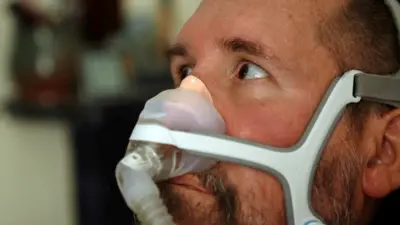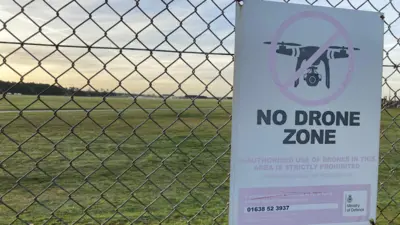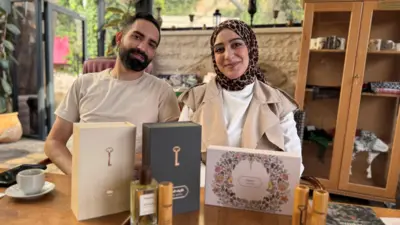We've updated our Privacy and Cookies Policy
We've made some important changes to our Privacy and Cookies Policy and we want you to know what this means for you and your data.
'World-class' surf lake opens near Bristol
- Author, Claire Marshall
- Role, Environment correspondent
A "world-class" surf lake that's opened in Bristol is 100% powered by renewable energy, say its creators.
Image source, Global Shots
Top Stories
The complex, called The Wave, cost £26m to build and can generate up to 1,000 waves an hour.
It provides a gentle swell for aspiring surfers and fast, hollow waves for veteran surfers.
Its owners call it "the perfect classroom" to raise awareness of environmental issues such as plastic pollution and carbon emissions.
Image source, Global Shots
The surf lake is in the village of Easter Compton, 12 miles north of Bristol city centre. The site covers 75 acres, with the lake itself measuring 180m long and 200m wide.
Top Stories
Alongside raising awareness of environmental issues, those behind The Wave hope to inspire social change. The first people to ride the waves were selected from hundreds of nominees.
They include a group of schoolchildren from central Bristol, some of whom had never seen the sea; Marshall Janson, a youngster from Cornwall who lost his hands and legs to meningitis, and Claire Moodie, who set up the campaign group Plastic Free North Devon.
The complex has also been designed to make the waves accessible to those with even the most severe disabilities.
It was Nick Hounsfield's idea, and it's taken 10 years to see the first wave break.
Image source, Image Cabin
"We've got a real opportunity of getting people, particularly kids, off computers, getting them outdoors, get them interacting with nature, and improving people's health and wellbeing on a physical and a mental basis," he said. "That's the bit that really makes me tick."
Mr Hounsfield admits to being worried what the reaction would be.
"Some of my friends are seasoned environmental campaigners, I was quite worried about building something quite artificial like this, as though it would somehow devalue it," he said.
"But all of them categorically say we cannot wait for the wave to be open because it will be the perfect classroom for us to be able to get that message out there in a really engaging way."
Image source, Javi Munoz
Top Stories
Mr Hounsfield continued: "Particularly because this is inland, there is a real disconnect between people who are living in cities, and maybe don't understand the impact of what they are doing day-to-day and the choices that they are making are having on the coastal environment - from what we flush down the toilet to our choices in single-use plastics."
The site has been built using as few toxic chemicals as possible. The buildings are timber-clade and insulated with sustainable wood fibre. They're also fitted with solar thermal panels that pre-heat water to reduce energy use. There are also plans to build infrastructure to allow the site to generate its own power.
Chief executive Craig Stoddart says it's costing an extra £100,000 a year to use renewable energy. "The idea of helping to acidify the ocean where natural waves come from, that's crazy - why would you do that? Let's get a conversation going about this; let's be responsible as an industry."
Image source, Image Cabin
Image source, Global Shots
Some 16,000 trees are being planted around the site; wildflower meadows and wetlands are also being created; hedgerows are being restored, and a space for outdoor learning is being developed.
The landscape architect is Ian Richardson. "My brief was to bring kids out of the inner city and play in a natural way - to be kids. Also for older people, to give them space to be in a natural environment."
It was constructed within the green belt on former farmland which, according to Mr Richardson, was "low in diversity and ecology."
"We needed to look at where the lake was and how it fitted in to the landscape. What we could do with all the soil that came out; how we could use it to improve biodiversity and habitat," he said.
Image source, Image Cabin
The Wave is in part of the Avon Forest conservation area. "I am very much of the mindset of looking at the wider context. Rather than creating a pocket of ecology, I wanted to connect it with the wider network of habitat corridors like hedgerows and nearby woodland, to allow flora and fauna to spread," Mr Richardson added.
The commitment to provide a connection with nature extends in to the lake itself. In the ocean, waves can form thousands of miles from where they break on land. They are born when wind moves over the surface of the water, stirring up ripples which grow in to a swell. A swell is essentially a moving band of energy, forged into a complex, shifting shape that peaks and breaks when it reaches shallower water.
The kind of wave you get depends on that sea bed, and the bottom of the Wave pool has been designed to mimic those that crash over coral reefs, known as "reef breaks." This means it's as close to a natural ocean wave as physics is currently able to generate.
Mr Hounsfield started the project with practically no money. "Everything from finding the land, to getting planning permission, to the massive hurdle of getting the financing. That took two-and-a-half years of 'Dragons Den' style meetings," he said.
Critics say that the regular, identical waves produced by surf lakes give people a false sense of security in the ocean. Some surfers also believe that it will lead to popular breaks becoming overcrowded.
Mr Hounsfield says that while it's possible there could be more surfers, they will understand the sport much better, be more environmentally aware - and be safer in the water. For example, they will teach people how to get out of dangerous rip currents.
Either way, surf lakes are here to stay. London is next: an exclusive deal with Lee Valley Regional Park Authority has been signed to build a Wave facility on land in Enfield.
Follow Claire
Image source, Global Shots
Top Stories
More to explore
Most read
Content is not available








